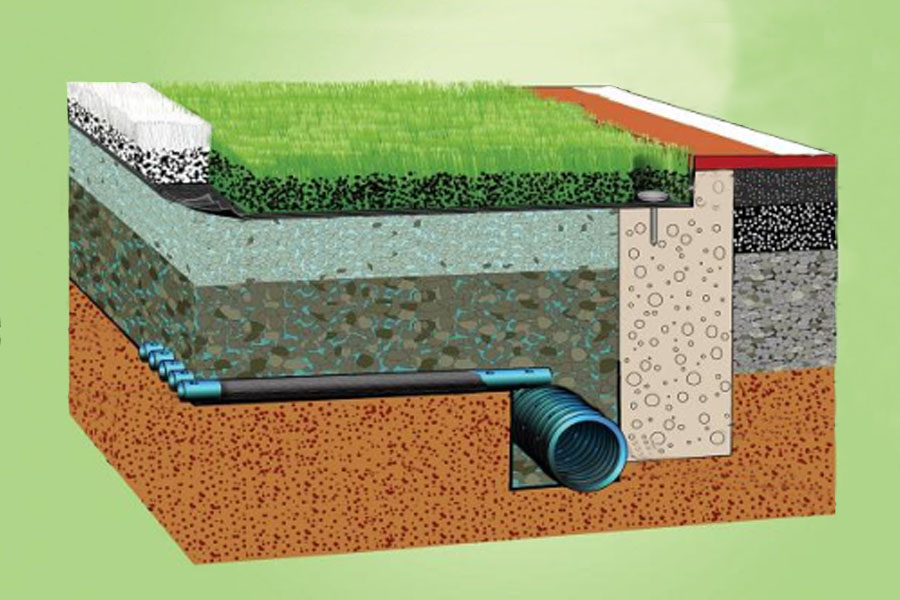Our guide to setting up the best drainage system underneath your fake grass.
To get the most out of your artificial grass, it’s imperative that you get the drainage right.
The best drainage system makes sure the life of your artificial grass is preserved, thereby outlasting any poorly maintained natural turf alternative.
Fake grass has evolved over the past two decades and drainage has vastly improved as a result.
This guide is designed to answer all of your questions around finding the best drainage solution to use for fake grass.
Does Artificial Grass Need Drainage?

Drainage on any artificial grass surface is an extremely important, yet often overlooked aspect.
All artificial surfaces require a system of drainage so that water can either run off, or easily pass through.
Stagnant water that remains on the surface has the potential to not only cause damage to your turf, but also poses a safety risk to you and your family.
Furthermore, it’s also extremely important to consider that just because your artificial grass surface drains water effectively, this doesn’t necessarily mean that the sub-base of your artificial turf shares those same properties.
It’s extremely important to consider artificial grass drainage as a two step process:
- On top of the surface.
- Under the surface.
How to Prevent Poor Drainage in Artificial Grass
For both natural and fake grass, there are some proven techniques available to prevent and improve poor drainage.
- Prickling or Spiking
Prickling or spiking is simply creating medium-sized holes in the carpet and topsoil of the fake grass, allowing water to begin draining down lower.
These holes are often filled with porous materials like granite or limestone; material that further increases the drainage speed, thus extending the lifetime of your artificial turf.
This drainage method is best used for artificial grass laid on top of soft soil surfaces where the water can naturally seep down. However, if the sub-base of your fake grass is made of an impermeable material such as clay, then prickling may not be your best option.
- Digging Ditches

Ditches are a common drainage solution and simply involve creating a channel for rainwater to be redirected down.
There are two common types of ditch used in garden drainage:
- Simple
- Hidden (French)
Simple ditches are as they sound – Simple.
Simple ditches require you to create a slanted channel into the surface, allowing gravity to drain the water into the ditch and away.
Hidden ditches on the other hand, is a trench filled with a high drainage material such as gravel or rock. A perforated pipe is then placed into the trench, allowing groundwater to be much more accurately redirected.
What Causes Artificial Grass Drainage Problems?

The two main causes of artificial grass drainage problems are natural and human error.
We go over a few key points surrounding each below.
- Geological or Natural causes
- A garden with clay soil as its sub-base, which retains water more easily than other soil types.
- An uneven surface leads to puddles springing up on the fake grass as a result of the water being directed to puddled areas.
- High water table underneath your garden.
- Installation errors
- The use of incorrect infill that results in holes in the fake grass backing becoming clogged.
- Incorrect sub-base used for your fake grass project.
- Installation of non-porous surfaces like concrete without proper drainage considerations.
Artificial Grass Drainage FAQs
Some frequently asked questions on the best drainage system to use for artificial grass include:
Will all artificial grass allow water to pass through?
Not all artificial grass allows water to pass through and drainage considerations must be made before installation.
Artificial grass requires a drainage solution, some of which we have gone over in the contents of this guide.
Which is the best surface for artificial grass to aid drainage?
Using a porous sub-base that allows water to easily move through may be easier, but is not always realistic for you.
While there is no single best surface for artificial grass to aid drainage, choosing the right drainage solution for your particular project is key.






